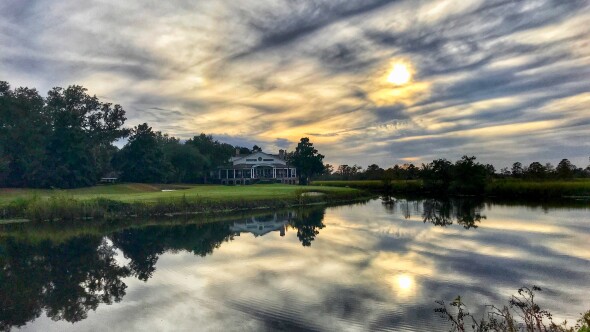Are you planning to escape to warmer climes for a golf trip this winter but don't want unexpected cold snaps and icy rain to scuttle your plans?
Well, you can breathe a little easier in light of the National Oceanic and Atmospheric Administration's (NOAA) official forecast for this winter.
In short, if you're thinking of heading to the American Southeast, Southwest or Hawaii, you could be blessed with even drier and warmer conditions than you would normally experience.
In other words, your chances for perfect golf vacation weather just went up.
Why?
La Nina is (probably) coming
Even casual readers of weather news are familiar with the terms "El Nino" and "La Nina." El Nino is a wide-ranging weather pattern caused by Pacific Ocean waters around the Equator running warmer than normal. This typically causes rainier than normal winter weather along the central and southern West Coast, as well as cooler and wetter weather all across the southern half of the United States. Northern states typically benefit from a warmer and drier winter than they are used to.
La Nina flips the script, more or less. Slightly cooler Pacific equatorial waters promote milder and drier conditions throughout the already-warmer parts of the country, while the upper Midwest and Rockies, particularly, can expect a colder winter with more precipitation than usual.
Per the NOAA's Climate Prediction Center, the chances of La Nina developing by winter (December through February) are 55-60%. Given this, whatever La Nina cycle does develop should be a bit weaker than normal, but there should still be some consequences for golfers planning a trip.

(NOAA/Climate Prediction Center)

(NOAA/Climate Prediction Center)
So, which popular winter golf destinations might La Nina make even more enjoyable than usual?
The Southeast
From the North Carolina coast through Florida, a La Nina-affected winter means a good chance (40% or more, per the NOAA's projections) of both drier and warmer temperatures. For example, average daily highs in Myrtle Beach, South Carolina hover between 56 and 58 degrees from December through February, with each of these months bringing an average of about 3.3 inches of precipitation. If you're escaping sub-freezing temperatures, that's not bad in itself, but La Nina increases the odds that you'll get some glorious 65-degree, sunny days during your trip.

Caledonia is one of the Myrtle Beach area’s best golf experiences. (Courtesy of Caledonia Golf & Fish Club)
Farther south, the odds are a little better still, especially if you want to avoid breaking out your rain suit. As you can see above, Sea Island and TPC Sawgrass lie within the region where the NOAA predicts the best chance of drier winter conditions. So if you're itching to cross the Stadium Course or the Seaside off your bucket list, this may be a golden opportunity to do so.
Texas

The 16th hole at the TPC San Antonio AT&T Oaks Course (Courtesy of TPC San Antonio)
If you're thinking of venturing to the Lone Star State but have been buffaloed by cold, windy winter conditions in the past, you might have better luck this year. Places like TPC San Antonio (with its PGA Tour-hosting AT&T Oaks and PGA Tour Champions-hosting AT&T Canyons courses), Horseshoe Bay Resort and Omni Barton Creek are all within the region with the greatest expectation of warmer weather.
The Southwest

Arizona courses like We-Ko-Pa’s Saguaro Course could enjoy even better winter weather than usual in the months to come (Brandon Tucker/Golf Advisor)
Arizona's Phoenix/Scottsdale and Tucson areas are great winter golf destinations every year, but a La Nina cycle could make the desert even more desirable. A decent chance of less precipitation and a very good chance of warmer temperatures, per the NOAA, support this claim.
Hawaii

Hawaii’s Mauna Kea may be home to warmer-than-average winter temperatures, but this year might be a touch rainier than usual. (Mike Bailey/Golf Advisor)
Hawaii is typically as close to a sure-thing destination for winter golf-worthy weather as exists in the United States, and this year should similar, with the caveat that while the state should favor warmer temperatures, certain areas may be a little wetter than normal.
What are your golf travel plans this winter? Does this forecast give you cause to rethink anything? Share your thoughts with us and your fellow readers in the comments below!











